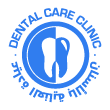Mouth Breathing, Malocclusion and the restoration of nasal breathing
Most dentists and orthodontists are aware of the impact that mouth breathing has on the development of the maxilla. Most are also aware of the fact that even after successful realignment of teeth, unless a retainer is used, relapse usually occurs.
The tongue is nature’s retainer and at the lateral force exertion of 500 Gm provides the balance required against the inward force pull of the cheek muscles, at also around 500 Gm.
In an ideal world, these two forces would balance each other and normal maxillary development would take place. The primary teeth would erupt smoothly and evenly and even in the mixed dentition stage there should not be overcrowding or malalignment of teeth. So what causes mouth breathing to occur and what can be done about it? The answer to this lies in the basic physiology that we all studied during the early part of our careers.
At the time we learned it we were not able to see its overall importance as we had yet to study the full gamut of anatomy and physiology to see how it all inter-related. By the time this happened we had forgotten most of it. So it should not come as any surprise that the information that follows will certainly strike a chord and probably elicit the usual comment “But I knew that!”
Snoring
Snoring is essentially the movement of too much air over the loose tissue at the back of the throat, causing it to rattle. Usually accompanied by open mouth breathing it perpetuates the loss of CO2 and maintains the dysfunctional breathing pattern. In many cases, teaching the patient to reduce the breathing rate and to sleep with closed mouth virtually eliminates the problem.
Sleep Apnea
Sleep apnea is a little different in that it is in many cases caused by a disruption of the pH of the blood due to the decrease in CO2. This causes the blood to become too alkaline leading the brain to think that the body cells are in danger of dying (which they are). The brain’s response to this is to suppress breathing for sufficient time for the CO2 level to rise, for more carbonic acid to be produced to buffer the blood and remove the danger to the cells. Once this has been achieved the signal to breathe is again given.
However, in the case of sleep apnea the ensuing breath is a large gasp and this lowers the CO2 levels again to danger point. This is why sleep apnea is characterised by a pause-gasp cycle which can occur up to 20–50 times an hour. In most cases this can be controlled by restoring CO2 levels to normal, ensuring that the pH integrity is maintained and the need to stop breathing is then removed.
Restoring nasal breathing as the norm
The good news is that it is possible to reverse this situation and re-create functional breathing. This requires several steps which begin with identifying the cause of the original problem.
Unless this is done, and the habit modified, relapse is a real fact of life. It is also necessary to address the breathing mechanics and dynamics so that the optimal levels of retained CO2 can be restored. The moment this happens the medullary response recognizes that retained CO2 levels have risen and starts to re-set the response to the appropriate level.
source: www.dentalnews.com

